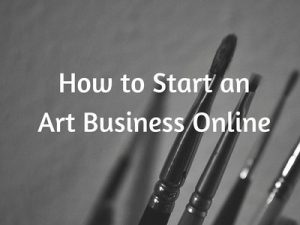 Recently, I was asked about how to start an art business online and it reminded me of my dream of becoming an artist, well, a long time ago. Obviously, I ended up doing something else because a lot of people didn’t find it a profitable career at that time.
Recently, I was asked about how to start an art business online and it reminded me of my dream of becoming an artist, well, a long time ago. Obviously, I ended up doing something else because a lot of people didn’t find it a profitable career at that time.
But is it really true that you can’t make money in the art field? Let’s see what kind of opportunities are out there for creative people like you.
What Type of Art Are You Interested In?
Art, on its own definition, is a very broad niche. When people say they like doing art, they are usually referring to something specific like drawing, painting or craft. So the first question to ask is, what type of art are you good at? Obviously, it would be the skill that you want to use as the foundation for monetization.
However, you also want to make sure that your skill is in demand. To find out, I am going to use Google Trend to check the popularity of a certain art type. I’ve randomly selected oil painting, figure painting, and acrylic painting as examples.
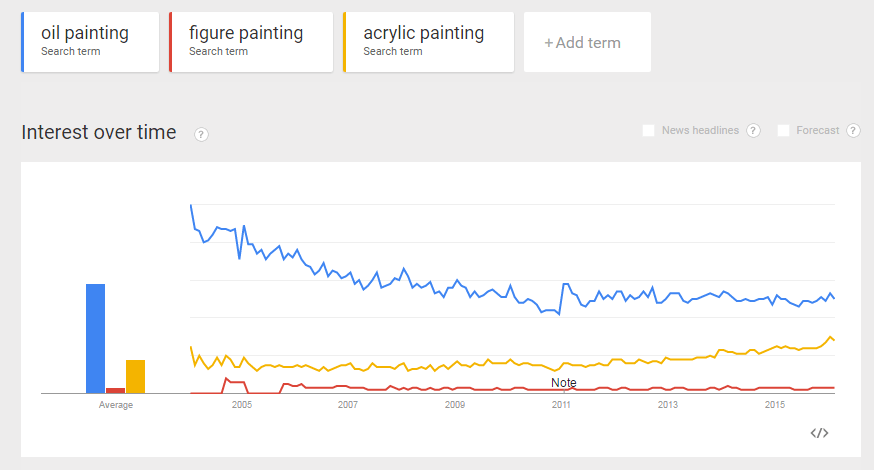
If you look closely, each of the art trends is different. Oil and acrylic painting seems to be more popular than figure painting, hence that should give you some ideas on which type of art to venture into.
Another resource that you can check out is TrendHunter. It is a community website that regularly posts an updated collection of cutting edge trends from various niches. If you checked under the Art & Design Category, you would find some interesting trends. This week, for example, I discovered that “Tiny Still Life Portraits” is quite a hot topic.
Now that’s an art category that I haven’t thought about. I wonder what the trend is like for ‘portrait drawing’ so I went to Google Trend and as expected, it’s a widely search term online (look at the upward trend since 2011).
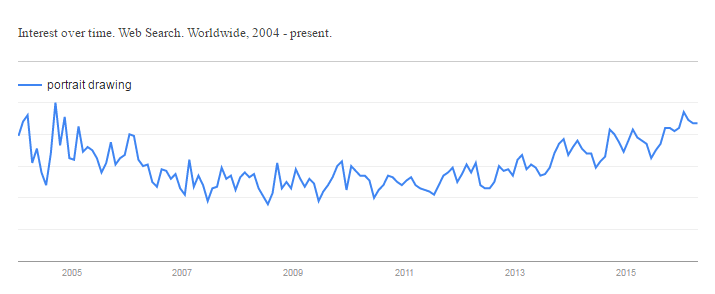
Combining both information from Google Trend and TrendHunter, you now know better what type of art skills is in demand for running a business.
How To Start An Art Business Online?
There are generally two ways to do this; sell products/services created by yourself OR recommend products/services by other artists. The most popular medium used for promoting a certain thing is content sharing through blog posts.
Within each blog post, you would target a key phrase that is essentially the core message that you want to get across to your readers. Remember those ‘hot’ terms that we discovered from Google Trend and TrendHunter? Those are the words that we want to use.
When you plug those words into the Alphabet Soup Technique, you’ll find more words that would make them more descriptive. Using the term ‘portrait drawing t…’, I could see a few suggestions from Google.
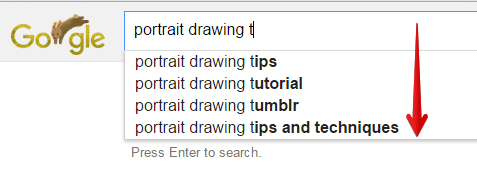
It appears that these are the four popular terms that people are currently searching online, but there’s more if you look all the way to the bottom of your search result page. Under the column that says “Searches related to portrait drawing tips”, you’ll find the LSI (Latent Semantic Indexing) key phrases.

These are not just a bunch of words, but they are actually closely related to the original keyphrase and offers a lot of value in finding low competition keywords in which I will describe shortly.
What’s The Point of Understanding Keywords?
Firstly, a content that’s written based on a targeted keyphrase ‘speaks’ to a group of audience. If they can relate to your content, then they are more likely to buy something online following your recommendation.
Secondly, keywords, when placed properly in an article, will boost the page ranking on the search results, thus getting more clicks and more audience visiting your website. Generating high online traffic over a long period of time will determine the success of your web business.
What’s a Good Keyphrase to Use?
With the help of the Jaaxy Keyword Tool, I am going to look for the ‘demand and supply’ of some of the LSI key phrases. As business owners, we are generally searching for a ‘HIGH demand, LOW supply’ trends as this equates to more profit gain and less competition. See the screen below.

The term “portrait drawing tips for beginners” has 32 average searches per month (demand value) and 18 competing websites (supply value). Now, take a look at the next one, an LSI variant of this key phrase.

The term “self-portrait drawing tips” has 152 average searches and only 5 competing websites. Hence, this would be a better choice. That’s in a nutshell, how you choose a good keyphrase to write for your blog.
Link a Content to an Income Source
One of the ways to teach people about certain drawing skills is to show them and creating video tutorials using the YouTube platform, for example, can be very effective. Take a look at some of these videos and the number of viewers that they get. These videos can be incorporated into blog tutorials, online courses or even an eBook, depending on what you want to monetize from.
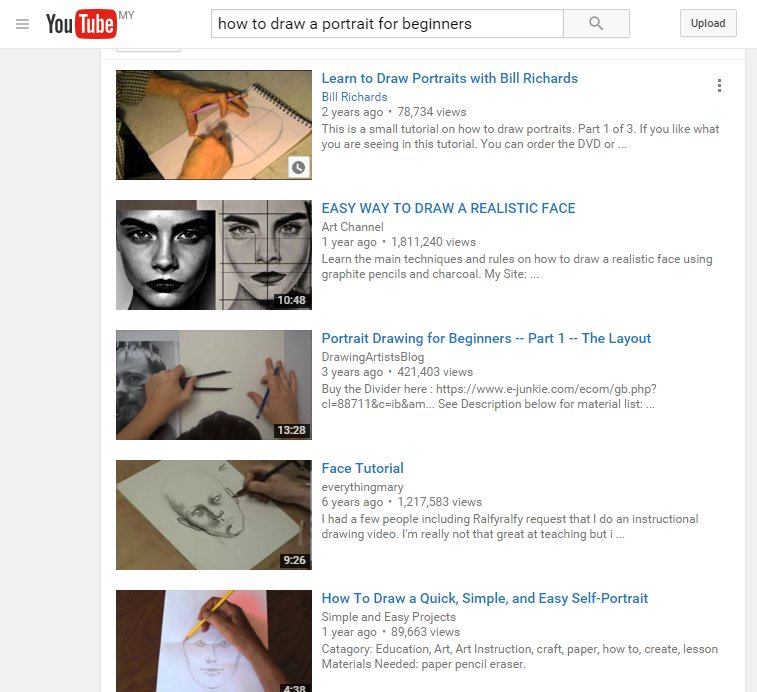
Alternatively, through affiliate programs, you can also recommend tools that you personally use for drawing a portrait. When someone sees how useful it is, they are more likely to buy the product and you’ll make a small affiliate commission as a result of that. In fact, affiliate marketing is one of the easiest methods to start with when you don’t have any experience running an online business. All you do is refer people to an existing art product/service without having to create a whole lot of things yourself.
In the Amazon marketplace, for example, there is a variety of drawing pencils that you can recommend, like these ones.
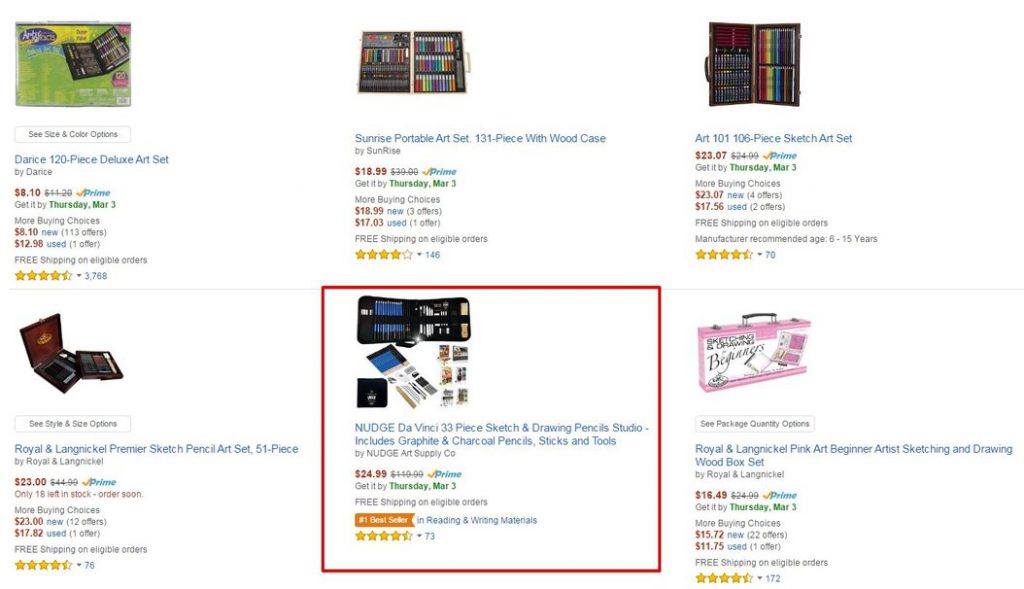
Amazon Associates earn from 4% for each sale, so if you can get a reader to buy the best seller “NUDGE Da Vinci 33 Piece Sketch & Drawing Pencils Studio”, you’ll earn about $1 in commission. Utrecht Art is another big online marketplace that caters to artists exclusively and their commission rate is 10%.
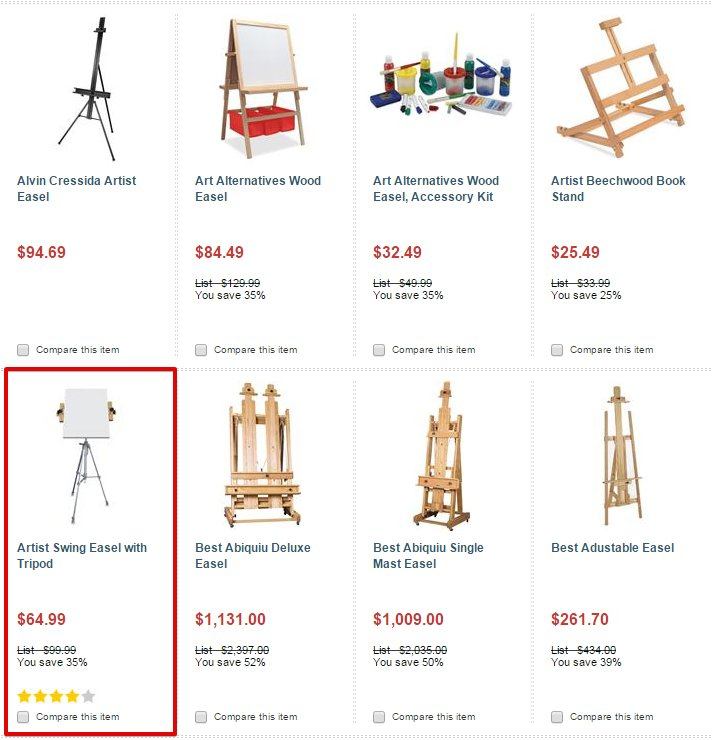 So, if you recommend the “Artist Swing Easel with Tripod”, you could earn up to $6.50 per sale. Although the money that you make is only a couple of dollars, bear in mind that online traffic is recurring and when people shops at reputable marketplaces like these, they usually buy more than one item so this can translate to more earnings for you too.
So, if you recommend the “Artist Swing Easel with Tripod”, you could earn up to $6.50 per sale. Although the money that you make is only a couple of dollars, bear in mind that online traffic is recurring and when people shops at reputable marketplaces like these, they usually buy more than one item so this can translate to more earnings for you too.
In other words, you can actually earn thousands of dollars by just recommending the same item to thousands of people searching online.
Art Can Be a Profitable Niche If You Know Where to Look
Has anyone ever told you that you can’t make money in art? Well, that was before the Internet era. If you know how to apply the techniques that I have just explained, you can build a successful online business even by just selling drawing pencils. And that is just ONE type of tool in the entire art niche.
Every art category has an interesting topic to write about and by learning how to do proper keyword research, you can write a ton of content for your business website to generate traffic and make sales. So, are you excited to create your first art business online? Join me at Wealthy Affiliate to get started. Hope to talk to you soon.
Do you have any thoughts or questions about this topic? Feel free to leave your comments in the space below and I will get back to you.

I did not know that we can get this type of information easily nowadays. Google Trend and Trendhunter are very useful. And aside from trends, there are examples on how to make a post or blog earn money. A very helpful post. It is not just about art, but about how to make a great online business. Thanks for this great post!
So many opportunities, and they sound like a good way to get started! Those tools look very great, the WordPress website builder, the keyword research platform and the Google’s search trends. Those should give a lot of ideas for new content to create and keep you busy for a while. It would also be a good idea to choose an art skills that you are already good, since learning to develop a new skill can take a while.
Wow, thank you so much for providing all of this free info. This is such a great post. I loved the graphs because I’m a visual guy and I had no clue that oil paintings were the most popular.
I’m more interested in photography, but it is nice to know what sells in the art industry too. Thank you for sharing this information.
Hi there Mike, I wrote a post on how to make your own photography website not long ago so maybe you want to have a look at that. This niche is certainly one of my favorite and I’ll be writing more about it from a business trend perspective in a later article.
Excellent advice Cathy! There are so many artists out there that basically quit their dream of making a living as an artist, just because people say they’ll never make any money at it.
Myself included, until late last year when I started thinking more about it. I’d always loved art, especially painting, but never thought it possible to make money from it…I always thought it’d just be a hobby, and often felt guilty taking time to draw or paint.
Now, I realize there are many artists that do make money from their art or art-related products. Using Google Trends and TrendHunter would be a great way to keep up on what people are looking for in the art niche.
I’ve used Google Trends before, but I can’t say I’ve tried TrendHunter, so I’ll definitely be checking that out. In fact, the recent trend of “tiny still life portraits” that you found on TrendHunter is something I haven’t even heard of before.
There are so many different types of art out there that it’s hard to know what is “in” or popular among people searching the internet…at least I’d thought until reading this. Not only artwork itself, but the products involved in creating it.
Thank you for sharing all the awesome tips here Cathy! I know it’ll help me out in the future and I’m sure it’ll help many other artists thinking of starting an online art business.
Their are so many people with so much artistic ability out there. Your page could be a great resource for them to kick start a business. The graphs were a good visual as I learn well that way and it was interesting to see what demand is out there in the art world over the years and how it has changed.
Hi there Blake,
The art world has certainly changed a lot from when I was young and I hope that this brainstorming guide can give artists some confidence that their niche have a place for online monetization too. They just need to be more creative and follow some basic online entrepreneurship training to get started.